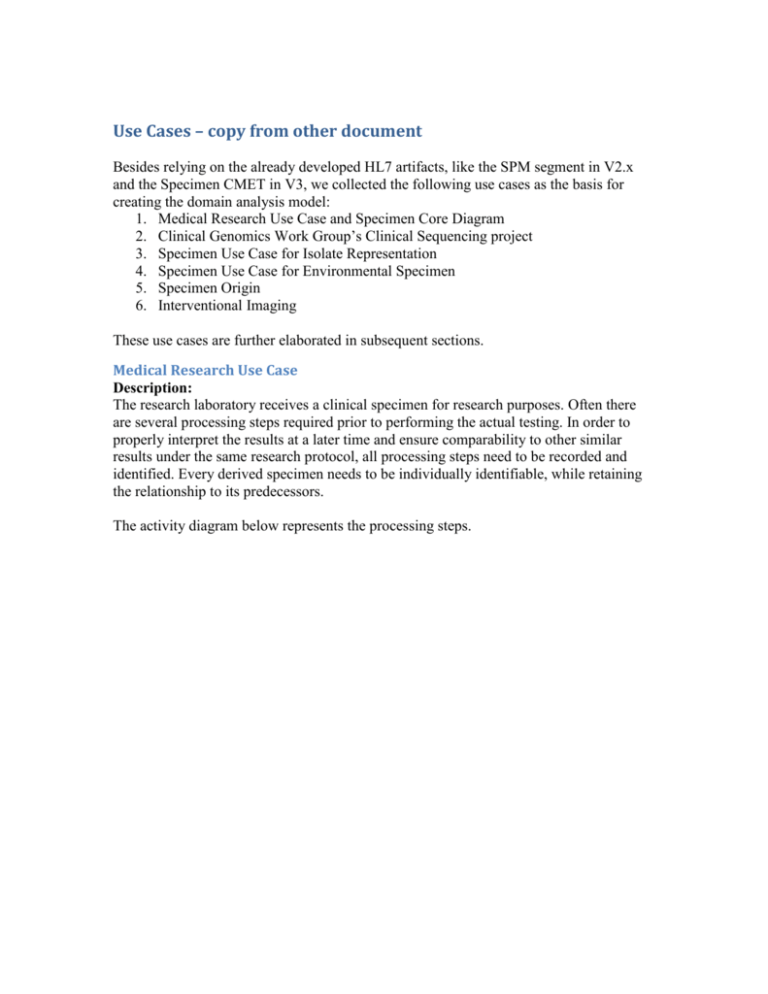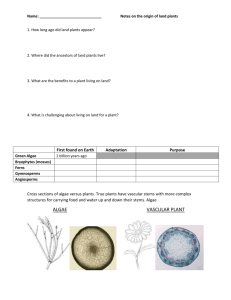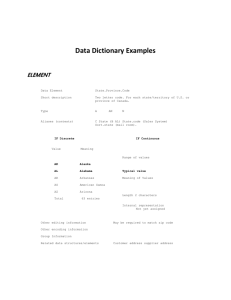
Use Cases – copy from other document
Besides relying on the already developed HL7 artifacts, like the SPM segment in V2.x
and the Specimen CMET in V3, we collected the following use cases as the basis for
creating the domain analysis model:
1. Medical Research Use Case and Specimen Core Diagram
2. Clinical Genomics Work Group’s Clinical Sequencing project
3. Specimen Use Case for Isolate Representation
4. Specimen Use Case for Environmental Specimen
5. Specimen Origin
6. Interventional Imaging
These use cases are further elaborated in subsequent sections.
Medical Research Use Case
Description:
The research laboratory receives a clinical specimen for research purposes. Often there
are several processing steps required prior to performing the actual testing. In order to
properly interpret the results at a later time and ensure comparability to other similar
results under the same research protocol, all processing steps need to be recorded and
identified. Every derived specimen needs to be individually identifiable, while retaining
the relationship to its predecessors.
The activity diagram below represents the processing steps.
act Specimen Collection and Handling Proces Models
Site
Site Lab
Setup"
1. Pre-label Vials
2. Culture Dishes on Ice
3. Liquid Nitrogen container ready
Ensure:
1. Supplies ready
2. Copy of signed
patient consent is onhand.
1. Extract Specimen
2. Place in sterile bowl
covered with sterile towel
3. Send to Site Pathology Lab
Testing Lab
Specimen Processing
Setup
Specimen Collectionx
Initial Handling
Resection Specimen
0.5 X 0.5 X 0.5 cm.
Specimen
1. Tumor Specifications:
2. Include tumor tissue
only
3. Trim off submucosa
4. Site Priority:
centrail area of tumor
tumor margin
Normal Tissue Specifications:
include full thickness
- colon wall
- mucosa
- sub mucosa
Site priority
- Distant, grossly uninvolved colon
- Perilesional uninvolved colon (normal tissue
ajacent to tumor)
- surrounding stroma
- polyps
If possible, collect tissue from each polyp.
Specimen Handling - Start
Place in pre-labeled
vials
Flash Freezing
1. Specimen in1-2 ml sterile
cryovial (tighly capped)
2. submerge in liquid
nitrogen
3. Place cryovial into LN2
transport vessel
Resectioned
Specimen
1. aliquot formal in to
specimen containers
2. use volume 15-20
times tissue volume
3. transfer using sterile
forceps per each
specimen sample
4. submerge sample in
formal in
Preserv ativ e
Extract RNA/DNA (T)
Extract DNA/RNA
DNA
Extract RNA (T)
1. Specimen on 1-2
ML sterile cryovial
(tightly capped)
2. pour OCT
compound into
cryomold
3. submerge tissue in
OCT media
4. place cryomold in
dry ice or hold over
liquid nitrogen
5. After OCT hardens,
place cryomold in
biopsy bag
6. Transfer to liquid
nitrogen storage tank (80c)
(preferred storage:
box with 8 sections)
7. record all specimen
information in the lab
log.
Store in Freezer
OCT Embedding
Store in Freezer
ReAgent
1. transfer reagent into
sterile specimen
container
(follow reagent to
tissue ratio amounts
per protocol)
2. use separate sterile
forceps for each
sample
3. during transport keep
tubes in upright
position
4. incubate specimen
in reagent overnight at
1-8 C degrees.
5. after 12 hours
refrigeration, transfer to
sterile cryovial
using a biological
hood under sterile
conditions
6. Transfer to liquid
nitrogen freezer or
mechanical -80 C
freezer for long-term
storage.
Store Specimen in Freezer
Record Specimen
Information
Feature Extraction
1. Identifier
2. Type
3. Condition
4. processing +
date/time
(e.g. flash freezing
with Ice, flash freezing
with liquid nitrogen,
Reagent used and
amount
Preservative used
and amount).
5. Color
6. Clarity
7. date/time sent to
testing lab
8. date/time received
by testing lab
Normalization and Error
Correction (some chips)
Analysis
Figure 1 Specimen Collection and Handling Activity Diagram
Page 2
© 2014 Health Level Seven International. All rights reserved.
[HL7 DAM Specimen Release 1]
[May 2014]
Clinical Genomics Workgroup’s Clinical Sequencing project
Description:
The purpose of this case is to describe the workflow needed for use in clinical genomics
testing. Unique to this use case is the requirement for explicate identification of 1 or more
specimens to be used in laboratory analysis. This likely necessitates the identification of
specimen groups (i.e. separate specimens and associated derivatives) originating from the
same patient/subject or related patients/subjects. In particular the following subtypes need
to be captured:
1. Germline testing for biomarkers/mutations (usually inherited)
2. Tumor testing for somatic (tumor specific biomarkers/mutations)
a. Matched specimens for germline and somatic analysis, where comparison
will result in the identification of tumor specific mutations/biomarkers
b. Tumor specimen without a matched germline specimen, where
mutations/biomarkers are believed to be specific to tumors.
3. Pediatric testing for biomarkers/mutations causal to rare early childhood
conditions
a. Matched specimens of patient and maternal and paternal specimens, where
comparison aids in identification of original biomarkers/mutations within
the patient
4. Prenatal testing which may be reported on the maternal medical record (and
should be identified as separate from germline testing
a. Often have matched fetal and maternal specimens for analysis
5. Infectious disease testing, where the biomarker/mutation identified within the
disease causing organism is reported into the patient medical record following
similar data standards as used for other testing scenarios above.
6. Microbiome analysis of a the patient
a. Includes analysis of microorganisms living in the patients gastrointestinal
tract or Genitourinary system
Derivatives which may be analyzed from the above testing scenarios include: DNA,
RNA, and Protein
Specimen Use Case for Isolate Representation
Description:
Public Health Labs often receive isolates submitted for reference testing. The specimen
type for that ordered test is the isolate, but information about the original clinical sample
the isolate was grown from is important, so it also needs to be conveyed. A related use
case is the testing of nucleic acid extracted from a sample, either submitted that way, or
processed at the lab. Where would the following attributes about that original specimen
be conveyed?
Not all of these would be required every time:
Original clinical specimen type (at minimum)
Original clinical specimen source site
Original clinical specimen collection method (if important)
Original clinical specimen additives / transport media (if important)
[HL7 DAM Specimen Release 1]
[May 2014]
Page 3
© 2014 Health Level Seven International. All rights reserved.
Preconditions:
Clinical sample has been submitted and a derived specimen has been created for
submission to another lab for further testing
Use Case Sequence Steps:
A clinical sample is submitted to the testing laboratory.
The testing laboratory provides testing on the clinical sample and in the process it creates
a derived specimen.
The testing laboratory does not have the capacity to complete testing on the derived
specimen.
The derived specimen is forwarded to the reference laboratory for further testing.
The reference laboratory receives the derived specimen and all information required to
properly interpret the requested test.
The reference laboratory completes testing and provides the result to the testing
laboratory, who forwards it to the original ordering provider.
Post Conditions:
Testing on the derived specimen is completed by the reference laboratory.
The result is sent to the testing laboratory.
The testing laboratory reports the results of its own testing along with the results from the
reference lab to the original ordering provider.
Actors:
Testing laboratory
Reference laboratory
Use Case Scenario:
Patient John Q. Doe, a 45 year old white Hispanic male is seen by Dr. Mark A. Jones for
severe diarrhea, who collects a stool sample and send that to his usual testing laboratory,
ACME Laboratory. During the testing process ACME Laboratory isolates Salmonella
from the stool specimen and sends the isolate on the state Public Health Laboratory,
where it is identified as Salmonella enterica subspecies enterica. The state Public Health
Laboratory does not have the capacity for further subtyping and forwards the isolate to
the Centers for Disease Control and Prevention’s National Salmonella Reference
Laboratory for identification and subtyping.
Specimen Use Case for Environmental Specimen
Description:
Public Health Environmental samples cover a broad spectrum of programs, matrixes, and
methods. This spectrum continues to expand frustrating efforts to harmonize data
elements for both the data generator and the data consumer. When defining the data
elements that are necessary to characterize environmental samples for submission to a
Public Health Laboratory it is useful to take a step back and seek opportunities to define
these data elements in a such a way that they are agnostic to programs, matrixes, and
methods and provide the ability to expand. Such an approach also makes data exchange
Page 4
© 2014 Health Level Seven International. All rights reserved.
[HL7 DAM Specimen Release 1]
[May 2014]
between sample submissions easier to map and harmonize. Starting with a domain model
that first looks at the organization of data elements is one approach.
As an example, Figure 1 is a domain model used for data exchange and data element
organization for public and private health laboratory sample submittal and collection of
results for environmental emergency response. This domain model is more inclusive than
needed for this discussion, since this domain model also includes data elements
associated with sample analysis and results.
Figure 2 - Domain Model for a Comprehensive Data Exchange and Data Element Organization of
Environmental Samples
At this time, the discussion is focused on the data elements associated with sample
submittal; an abbreviated domain model is appropriate.
Listed below are data element groups with example data elements that reflect multiple
programs, matrixes (referred to as specimen type in the clinical domain), and methods
associated with environmental health sample submissions.
For consideration in the DAM we are mostly interested in items #2, #3, #4 and #5. Some
of the elements included in the DAM can also be used to address chain of custody
requirements.
1. Organizational Requestor Type
i.
Homeowner
ii.
Regulatory Program Associated with sample
iii.
FDA Program
a.
eLexnet
(https://www.elexnet.com/elex/login/elexnethome.jsp)
iv.
EPA Program
a.
Safe Drinking Water Information System SDWIS
(http://water.epa.gov/scitech/datait/databases/drink/sdwisfed)
b.
Air Quality System AQS
(http://www.epa.gov/ttn/airs/aqsdatamart/)
c.
National Pollutant Discharge Elimination System NPDES
(http://cfpub.epa.gov/npdes/home.cfm?program_id=45)
[HL7 DAM Specimen Release 1]
[May 2014]
Page 5
© 2014 Health Level Seven International. All rights reserved.
v.
Centers for Disease Control and Prevention CDC
a.
LRN-C
vi.
Environmental Public Health Tracking
vii.
Environmental Childhood Lead
2. Sample Collection Information
a.
Unique Sample Identifier supplied by Sampler; if a
regulatory sample the sample license or regulatory identifier
for the sample = format of ID plus assigning authority
b.
Sample Matrix (soil, water, air) = coded format with a sub
matrix to reflect additional information as separate matrix
modifier = coded format or text
1. E.g. for water: well, lake, river, reservoir
2. E.g. for soil: sand, clay, humus, landfill
3. E.g. for food: fresh, cooked, commercial, home-made,
fermented, pickled
c.
Sample Type to reflect the growing interest to capture
measurement of quality objectives used for data validation
such as:
1. Test sample
2. Field Spike and Laboratory Spike
3. Field Blank and Laboratory Blank
4. Field Duplicate and Laboratory Duplicate
5. sampler/requestor name = name format
6. date collected (range) = date/time format, include start and
end date time, if applicable
7. additional information specific to the program the sample is
collected for
3. Sample Subject Information
a.
Type of Object, if applicable (for example the medical
device) = coded format
b.
Manufacturer = text format
c.
Model = text format
d.
Lot Number = text format
e.
Service Date (or Prepared Date for food) = date/time format
f.
Expiration Date = date/time format
g.
Relationship to Human Sample = ID and assigning authority
format (or name format?)
4. Sample Location
a.
GIS
b.
Text Location = address format (street, town, state, zip etc)
c.
Name or Identifier for the location (e.g. well ID, or name of
lake) = format of ID and assigning authority or name (or
would this be the sample subject?)
d.
Additional Information about the location of the sample (e.g.
shore of the lake, close to house, playground) = text format
e.
Coordinates of sample collection (including depth)
Page 6
© 2014 Health Level Seven International. All rights reserved.
[HL7 DAM Specimen Release 1]
[May 2014]
5. Sample Characteristics that may affect analysis
a.
pH = number and units format
b.
Turbidity
c.
Temperature = number and units format
d.
Preservative = coded format
e.
Sample container = coded format
f.
Sample Batch Identifier = ID format with assigning authority
g.
Number of Samples in the Batch = number format
6. Sample Analysis Requested
a.
Sample Method = coded format
b.
Sample Results Point of Contact = name format and possibly
ID format with assigning authority
c.
Other information such as turnaround time, requested
detection limits, result data formats, data report format, etc
7. Chain of Custody
a.
Chain of Custody Identifier needed = Boolean – if checked,
then:
1. Time Sample Delivered to Lab = date/time format
2. Any other Sample Collectors = name format and possibly
ID format with assigning authority
3. Additional Sample Identifier = ID format with assigning
authority
Use Case Scenario:
1. Water testing:
a. Surface water testing for coliform bacteria:
Every month the Public Health Laboratory receives water samples
collected from the local lake that is used as a swimming facility during the
summer and determines the number of coliform bacteria in order to
evaluate, if the lake is still safe for public use.
b. Well water testing for toxic contaminants:
1. A homeowner collects water from a well to check for
contaminants to determine, if it is still safe to drink.
2. As part of the Safe Drinking Water Act all public water
agencies have to regularly submit samples from their public
water supply samples for contaminants testing
2. Soil sampling:
a. Testing for lead in soil:
After an elevated blood lead level is reported to the Public Health Agency
a case worker collects soil samples at the playground of the child care
center and at the home of the child. These soil samples are then tested to
determine the lead content to help locate the source of the lead
contamination.
3. Environmental Swab
a. Routine Infection Control:
[HL7 DAM Specimen Release 1]
[May 2014]
Page 7
© 2014 Health Level Seven International. All rights reserved.
As part of infection control the laboratory performs routine swabs of
hospital equipment used in the Intensive Care Unit and sends to the
laboratory for culture.
4. Food
a. A patient has been diagnosed with Salmonella typhi and this result has
been reported to the Public Health Agency. A case investigation is started
and based on the interview with the patient several food items are selected
as possible sources and are sent to the Public Health Laboratory for
testing.
Specimen Origin
Description:
Public health laboratories that handle a variety of sample types, not just human clinical
samples, need an easy was to identify the category of specimen, also referred to as origin.
As demonstrated in the Environmental Specimen Use case described above, the data
elements required to be provided in order to properly interpret test results differs quite
considerably from those needed for clinical samples depending on the category of
specimen submitted.
Interventional Imaging
Description:
Interventional Imaging is part of the anatomical pathology workflow when examining
specimen. As part of the typical anatomic pathology workflow all samples removed in a
single collection procedure, be they biologic (e.g. tissue) or non-biologic (e.g. orthopedic
hardware) are considered a single “Case” and given a single identifier, often referred to
as an accession. However the surgeon may label and send one or more discrete
collections of material (specimens) to pathology for analysis, which are expected to be
both identified as being part of the “Case”, while at the same time being treated as a
separate entity as well. Each “Part” is a logical component of the laboratory workflow
and is managed separately. Each “Part” can be further processed into smaller sections
called “Blocks” treated with different materials (e.g. embedded in a paraffin block or
epoxy resin) for further examination. This “Block” can be further sliced into thin
“Sections” and one or more “Sections” will be placed on slides for histological
examination.
Page 8
© 2014 Health Level Seven International. All rights reserved.
[HL7 DAM Specimen Release 1]
[May 2014]
Figure 3 – Sampling for one specimen for one container
[ftp://medical.nema.org/medical/dicom/2011/11_17pu.pdf – Figure NN.4-1page 315]
So the specimen model needs to accommodate the identification of Case, Part, Block and
Slide or similar entities derived by processing steps – each can be generalized as
“Container”.
Digital Imaging and Communications in Medicine (DICOM) defines formal attributes for
the identification and description of the specimen that is subject of a DICOM image –
these are necessary to understand and interpret the image. They cover the following
classes:
Specimen
Container
Specimen Collection
Specimen Sampling
Specimen Processing
[HL7 DAM Specimen Release 1]
[May 2014]
Page 9
© 2014 Health Level Seven International. All rights reserved.
Specimen Ancestor(s)
From: Digital Imaging and Communications in Medicine (DICOM)
Part 17: Explanatory Information, Published by National Electrical Manufacturers
Association, 2011 pages 301-327;
ftp://medical.nema.org/medical/dicom/2011/11_17pu.pdf
Detailed specimen information can be found in DICOM Part 3;
ftp://medical.nema.org/medical/dicom/2011/11_03pu.pdf).
This information that has been specified by DICOM WG26 "Pathology" (DICOM
Supplement 122 "Specimen Identification and Revised Pathology" Project)
Page 10
© 2014 Health Level Seven International. All rights reserved.
[HL7 DAM Specimen Release 1]
[May 2014]






